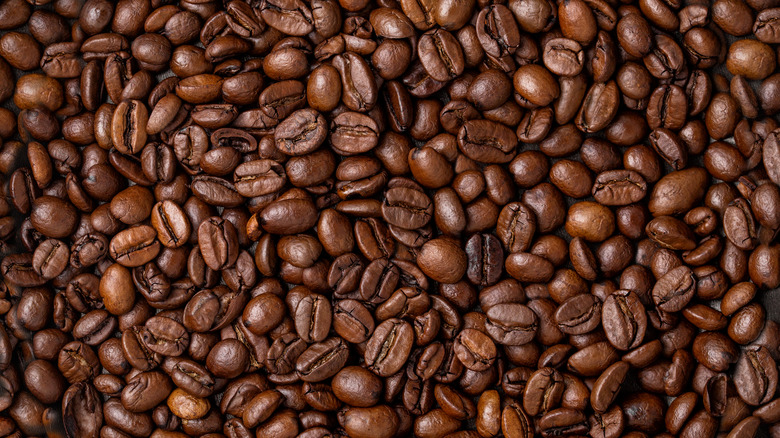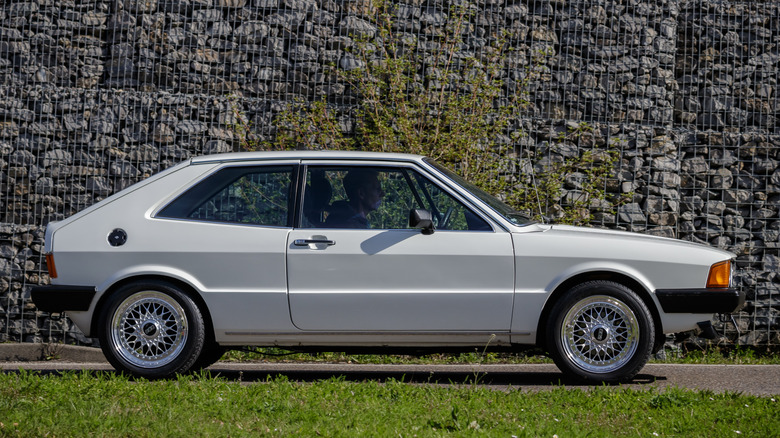This Car Manufacturer Designed A Vehicle That Ran On Coffee
Over the previous decade, ethanol cars have developed a small but durable niche. By 2018, Hot Cars could list 30 models that run on ethanol. There's also a car that was made to run on coffee, though it's not commercially available. It's more of a proof of concept.
In 2011, the BBC1 science program "Bang Goes the Theory" converted a 1988 Volkswagen Scirocco into a coffee-fueled car. In 2012 Daily Mail explained that this model was chosen because it looked sort of like a cheaper version of the DeLorean in "Back to the Future."
The trip the team intended to make would cover the 210 miles that lie between London and Manchester. This was theoretically possible, as the show's producer Nick Watson explained, because "Coffee, like wood or coal, has some carbon content so you can use it as a fuel." While taking the Dunkin' slogan of running on coffee literally might sound silly, the BBC reported that the car completed its maiden voyage without any real drama.
How did coffee power the car?
The point of the trip was to demonstrate how alternative fuels could work and inspire people with a more hands-on approach to scientific television. So, how did coffee power the car?
PC World explains that the coffee grounds are heated, breaking the beans into gas. The gas is then filtered to remove any burnt impurities, and the result is used in the same way that gas is used to fuel a car. This presents some problems, though. Coffee would not prove a reliable fuel source, as that trip required 70 kilos of coffee, or just over 154 pounds. Moreover, the vehicle, dubbed "Carpuccino," needed refuelling every 30 to 45 miles, and the trip could cost between £910-£1,820 ($1,240-$2,480), depending on the coffee's quality. Furthermore, as Phys.org notes, every 60 miles, the filter would need changing.
While it is amazing that the machine could work, it's unlikely to beat ethanol or electric cars as the alternative to the dirtier mainstream transport.

